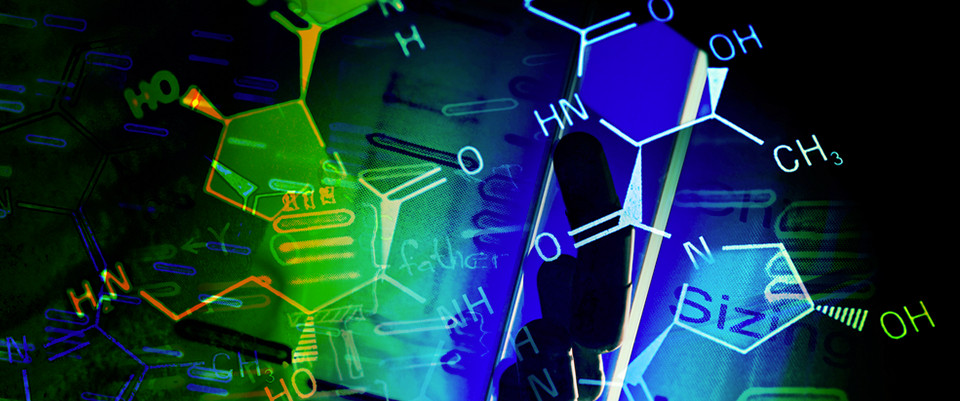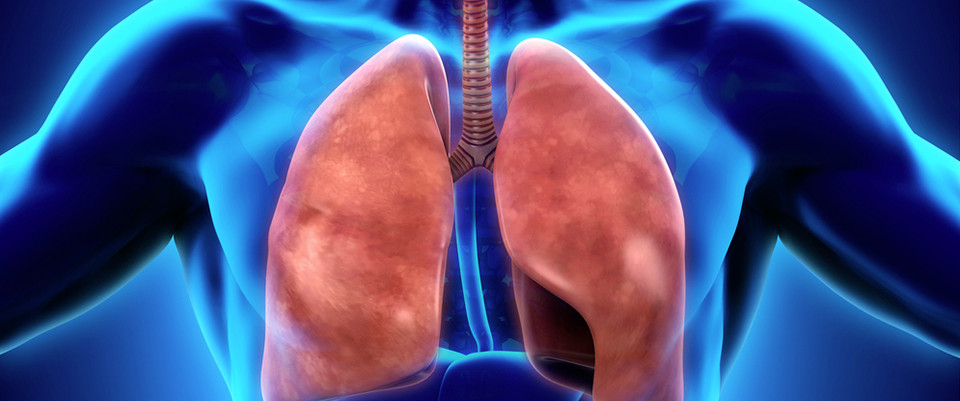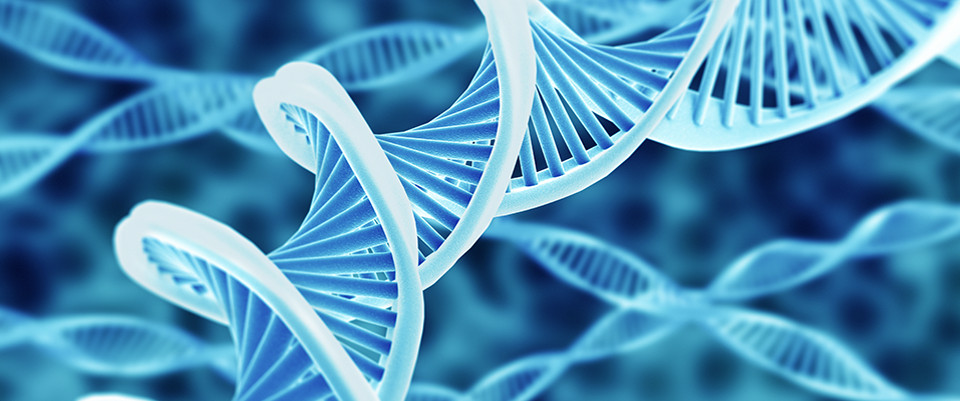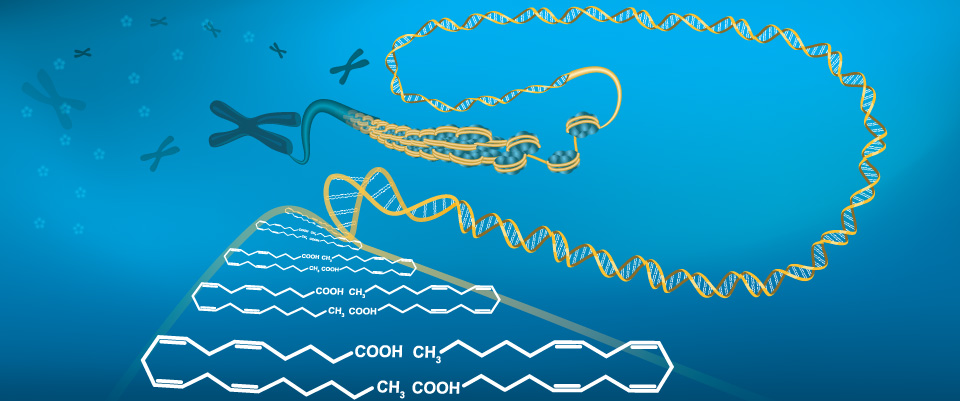PubMed
Integration of parallel metabolomics and transcriptomics reveals metabolic patterns in porcine oocytes during maturation
Front Endocrinol (Lausanne). 2023 Feb 1;14:1131256. doi: 10.3389/fendo.2023.1131256. eCollection 2023.ABSTRACTWell-controlled metabolism is the prerequisite for optimal oocyte development. To date, numerous studies have focused mainly on the utilization of exogenous substrates by oocytes, whereas the underlying mechanism of intrinsic regulation during meiotic maturation is less characterized. Herein, we performed an integrated analysis of parallel metabolomics and transcriptomics by isolating porcine oocytes at three time points, cooperatively depicting the global picture of the metabolic patterns during maturation. In particular, we identified the novel metabolic features during porcine oocyte meiosis, such as the fall in bile acids, the active one-carbon metabolism and a progressive decline in nucleotide metabolism. Collectively, the current study not only provides a comprehensive multiple omics data resource, but also may facilitate the discovery of molecular biomarkers that could be used to predict and improve oocyte quality.PMID:36817597 | PMC:PMC9929430 | DOI:10.3389/fendo.2023.1131256
Chronic treatment with baicalein alleviates behavioural disorders and improves cerebral blood flow via reverting metabolic abnormalities in a J20 transgenic mouse model of Alzheimer's disease
Brain Behav Immun Health. 2023 Jan 31;28:100599. doi: 10.1016/j.bbih.2023.100599. eCollection 2023 Mar.ABSTRACTBaicalein (BE) has both antioxidant and anti-inflammatory effects. It has also been reported able to improve cerebral blood circulation in brain ischemic injury. However, its chronic efficacy and metabolomics in Alzheimer's disease (AD) remain unknown. In this study, BE at 80 mg/kg was administrated through the oral route in J20 AD transgenic mice aged from aged 4 months to aged 10 months. Metabolic- and neurobehavioural phenotyping was done before and after 6 months' treatment to evaluate the drug efficacy and the relevant mechanisms. Meanwhile, molecular docking was used to study the binding affinity of BE and poly (ADP-ribose) polymerase-1 (PARP-1) which is related to neuronal injury. The open field test showed that BE could suppress hyperactivity in J20 mice and increase the frequency of the target quadrant crossing in the Morris Water Maze test. More importantly, BE restored cerebral blood flow back to the normal level after the chronic treatment. A 1H NMR-based metabolomics study showed that BE treatment could restore the tricarboxylic acid cycle in plasma. And such a treatment could suppress oxidative stress, inhibit neuroinflammation, alleviate mitochondrial dysfunction, improve neurotransmission, and restore amino homeostasis via starch and sucrose metabolism and glycolipid metabolism in the cortex and hippocampus, which could affect the behavioural and cerebral blood flow. These findings showed that BE is a potential therapeutic agent for AD.PMID:36817510 | PMC:PMC9931920 | DOI:10.1016/j.bbih.2023.100599
Precision medicine and metabolic syndrome
ARYA Atheroscler. 2022 Jul;18(4):1-10. doi: 10.22122/arya.2022.26215.ABSTRACTMetabolic syndrome (MetS) is one of the most important health issues around the world and a major risk factor for both type 2 diabetes mellitus (T2DM) and cardiovascular diseases. The etiology of MetS is determined by the interaction between genetic and environmental factors. Effective prevention and treatment of MetS notably decreases the risk of its complications such as diabetes, obesity, hypertension, and dyslipidemia. According to recent genome-wide association studies, multiple genes are involved in the incidence and development of MetS. The presence of particular genes which are responsible for obesity and lipid metabolism, affecting insulin sensitivity and blood pressure, as well as genes associated with inflammation, can increase the risk of MetS. These molecular markers, together with clinical data and findings from proteomic, metabolomic, pharmacokinetic, and other methods, would clarify the etiology and pathophysiology of MetS and facilitate the development of personalized approaches to the management of MetS. The application of personalized medicinebased on susceptibility identified genomes would help physicians recommend healthier lifestyles and prescribe medications to improve various aspects of health in patients with MetS. In recent years, personalized medicine by genetic testing has helped physicians determine genetic predisposition to MetS, prevent the disease by behavioral, lifestyle-related, or therapeutic interventions, and detect, diagnose, treat, and manage the disease. Clinically, personalized medicine is providing effective strategies for the prevention and treatment of MetS by reducing the time, cost, and failure rate of pharmaceutical clinical trials. It is also eliminating trial-and-error inefficiencies that inflate health care costs and undermine patient care.PMID:36817343 | PMC:PMC9937665 | DOI:10.22122/arya.2022.26215
Editorial: Antidepressant mechanisms of natural products based on multi-omics technologies
Front Pharmacol. 2023 Feb 3;14:1135791. doi: 10.3389/fphar.2023.1135791. eCollection 2023.NO ABSTRACTPMID:36817158 | PMC:PMC9937692 | DOI:10.3389/fphar.2023.1135791
Sex-specific radiomic features of L-[S-methyl-<sup>11</sup>C] methionine PET in patients with newly-diagnosed gliomas in relation to IDH1 predictability
Front Oncol. 2023 Feb 3;13:986788. doi: 10.3389/fonc.2023.986788. eCollection 2023.ABSTRACTINTRODUCTION: Amino-acid positron emission tomography (PET) is a validated metabolic imaging approach for the diagnostic work-up of gliomas. This study aimed to evaluate sex-specific radiomic characteristics of L-[S-methyl-11Cmethionine (MET)-PET images of glioma patients in consideration of the prognostically relevant biomarker isocitrate dehydrogenase (IDH) mutation status.METHODS: MET-PET of 35 astrocytic gliomas (13 females, mean age 41 ± 13 yrs. and 22 males, mean age 46 ± 17 yrs.) and known IDH mutation status were included. All patients underwent radiomic analysis following imaging biomarker standardization initiative (IBSI)-conform guidelines both from standardized uptake value (SUV) and tumor-to-background ratio (TBR) PET values. Aligned Monte Carlo (MC) 100-fold split was utilized for SUV and TBR dataset pairs for both sex and IDH-specific analysis. Borderline and outlier scores were calculated for both sex and IDH-specific MC folds. Feature ranking was performed by R-squared ranking and Mann-Whitney U-test together with Bonferroni correction. Correlation of SUV and TBR radiomics in relation to IDH mutational status in male and female patients were also investigated.RESULTS: There were no significant features in either SUV or TBR radiomics to distinguish female and male patients. In contrast, intensity histogram coefficient of variation (ih.cov) and intensity skewness (stat.skew) were identified as significant to predict IDH +/-. In addition, IDH+ females had significant ih.cov deviation (0.031) and mean stat.skew (-0.327) differences compared to IDH+ male patients (0.068 and -0.123, respectively) with two-times higher standard deviations of the normal brain background MET uptake as well.DISCUSSION: We demonstrated that female and male glioma patients have significantly different radiomic profiles in MET PET imaging data. Future IDH prediction models shall not be built on mixed female-male cohorts, but shall rely on sex-specific cohorts and radiomic imaging biomarkers.PMID:36816966 | PMC:PMC9936222 | DOI:10.3389/fonc.2023.986788
The Effects of a High-Fat/Cholesterol Diet on the Intestine of Rats Were Attenuated by <em>Sparassis latifolia</em> Polysaccharides
Food Technol Biotechnol. 2022 Dec;60(4):469-487. doi: 10.17113/ftb.60.04.22.7561.ABSTRACTRESEARCH BACKGROUND: Sparassis latifolia polysaccharides can regulate lipids and cholesterol in serum and liver. However, little is known about the regulation mechanism of the polysaccharides on cholesterol metabolism and especially the causal relationship with gut microbiota regulation. This study will provide a theoretical basis for the cholesterol-lowering mechanism of S. latifolia polysaccharides and further development of functional foods.EXPERIMENTAL APPROACH: In this study, we investigated how the regulation mechanism of Sparassis latifolia polysaccharides affects intestinal cholesterol metabolism in high-fat and high-cholesterol diet-fed rats. Briefly, enzymatic colorimetric microplate assay was used to determine the concentration of faecal bile acid. Gas chromatography-mass spectrometry was used to detect the content of cholesterol and alcohol in faeces. Haematoxylin and eosin staining method was applied to observe the changes in the structure of the small intestine tissue. The related gene expressions in jejunum and ileum were detected by real-time fluorescent quantitative polymerase chain reaction. The related protein expressions in jejunum were studied by using Western blot. High-throughput sequencing was used to detect the intestinal flora changes of the caecal contents. Gas chromatography-mass spectrometry was applied to detect the concentration of short-chain fatty acids in the caecal content.RESULTS AND CONCLUSIONS: The results showed that Sparassis latifolia polysaccharides could improve the intestinal morphological structure and physiological indices in rats fed high-fat and high-cholesterol diet. Moreover, it could improve intestinal cholesterol metabolism disorder induced by high-fat and high-cholesterol diets via the reduction of the expression of HMGCR, NPC1L1, ACAT2, MTP, ASBT and IBABP mRNA or protein, increasing ABCG8 mRNA expression. In addition, it could also increase the relative abundance of Bacteroides, Butyricicoccus, Parabacteroides, Parasutteerella and Alloprevotella and the short-chain fatty acid concentration, to comprehensively regulate the intestinal cholesterol metabolism. The metabolomics analysis found that Sparassis latifolia polysaccharides could affect lipid, carbohydrate and other related metabolites. Some biomarkers associated with cholesterol metabolism correlated significantly with the abundance of specific intestinal microbiota.NOVELTY AND SCIENTIFIC CONTRIBUTION: These findings indicate that Sparassis latifolia polysaccharides could attenuate intestinal cholesterol metabolism disorder, correlating with modulating gut microbiota and improving host metabolism. They provide theoretical support for the development of Sparassis latifolia as a new food resource.PMID:36816874 | PMC:PMC9901340 | DOI:10.17113/ftb.60.04.22.7561
Solid-phase microextraction of endogenous metabolites from intact tissue validated using a Biocrates standard reference method kit
J Pharm Anal. 2023 Jan;13(1):55-62. doi: 10.1016/j.jpha.2022.09.002. Epub 2022 Oct 8.ABSTRACTImproved analytical methods for the metabolomic profiling of tissue samples are constantly needed. Currently, conventional sample preparation methods often involve tissue biopsy and/or homogenization, which disrupts the endogenous metabolome. In this study, solid-phase microextraction (SPME) fibers were used to monitor changes in endogenous compounds in homogenized and intact ovine lung tissue. Following SPME, a Biocrates AbsoluteIDQ assay was applied to make a downstream targeted metabolomics analysis and confirm the advantages of in vivo SPME metabolomics. The AbsoluteIDQ kit enabled the targeted analysis of over 100 metabolites via solid-liquid extraction and SPME. Statistical analysis revealed significant differences between conventional liquid extractions from homogenized tissue and SPME results for both homogenized and intact tissue samples. In addition, principal component analysis revealed separated clustering among all the three sample groups, indicating changes in the metabolome due to tissue homogenization and the chosen sample preparation method. Furthermore, clear differences in free metabolites were observed when extractions were performed on the intact and homogenized tissue using identical SPME procedures. Specifically, a direct comparison showed that 47 statistically distinct metabolites were detected between the homogenized and intact lung tissue samples (P < 0.05) using mixed-mode SPME fibers. These changes were probably due to the disruptive homogenization of the tissue. This study's findings highlight both the importance of sample preparation in tissue-based metabolomics studies and SPME's unique ability to perform minimally invasive extractions without tissue biopsy or homogenization while providing broad metabolite coverage.PMID:36816540 | PMC:PMC9937786 | DOI:10.1016/j.jpha.2022.09.002
Untargeted and targeted mass spectrometry reveal the effects of theanine on the central and peripheral metabolomics of chronic unpredictable mild stress-induced depression in juvenile rats
J Pharm Anal. 2023 Jan;13(1):73-87. doi: 10.1016/j.jpha.2022.10.001. Epub 2022 Oct 13.ABSTRACTl-theanine has been shown to have a therapeutic effect on depression. However, whether l-theanine has an excellent preventive effect on depression in children and adolescents and what its mechanism is have not been well explained. Given the complexity of the pathogenesis of depression, this study investigated the preventive effect and mechanism of l-theanine on depression in juvenile rats by combining serum and hippocampal metabolomic strategies. Behavioral tests, hippocampal tissue sections, and serum and hippocampal biochemical indexes were studied, and the results confirmed the preventive effect of l-theanine. Untargeted reversed-phase liquid chromatography-quadrupole-time-of-flight mass spectrometry and targeted hydrophilic interaction liquid chromatography-triple quadrupole mass spectrometry were developed to analyze the metabolism changes in the serum and hippocampus to screen for potential biomarkers related to l-theanine treatment. The results suggested that 28 abnormal metabolites in the serum and hippocampus that were considered as potential biomarkers returned to near-normal levels after l-theanine administration. These biomarkers were involved in various metabolic pathways, mainly including amino acid metabolism and lipid metabolism. The levels of amino acids and neurotransmitters in the phenylalanine, tryptophan, and glutamic acid pathways were significantly reduced after l-theanine administration compared with chronic unpredictable mild stress-induced rats. In summary, l-theanine had a significant preventive effect on depression and achieved its preventive results on depression by regulating various aspects of the body, such as amino acids, lipids, and inflammation. This research systematically analyzed the mechanism of l-theanine in preventing depression and laid the foundation for applying l-theanine to prevent depression in children and adolescents.PMID:36816539 | PMC:PMC9937789 | DOI:10.1016/j.jpha.2022.10.001
Combined analysis of multi-omics reveals the potential mechanism of flower color and aroma formation in <em>Macadamia integrifolia</em>
Front Plant Sci. 2023 Feb 1;13:1095644. doi: 10.3389/fpls.2022.1095644. eCollection 2022.ABSTRACTINTRODUCTION: Macadamia integrifolia Maiden & Betche is a domesticated high-value nut crop. The development of nut flower affects the fruit setting rate, yield and quality of nuts. Therefore, in this experiment, two varieties with different flower color, flowering time, flowering quantity and nut yield (single fruit weight) were selected as the research objects.METHODS: Transcriptome (RNA-Seq) and metabolome (LC-MS/MS, GC-MS) analyses were performed to study the regulatory mechanisms of nut flower development, color and aroma.RESULTS: The results indicated that plant hormone signal transduction, starch sucrose metabolism, phenylpropanoid metabolism, flavonoid biosynthesis, and anthocyanin biosynthesis pathways were related to nut flower development and flower color formation. In the early stage of flowering, most of the differentially expressed genes (DEGs) are involved in the IAA signal transduction pathway, while in the later stage, the brassinolide signal pathway is mainly involved. In starch and sugar metabolism, DEGs are mainly involved in regulating and hydrolyzing stored starch into small molecular sugars in flower tissues. In the phenylpropanoid biosynthesis pathway, DEGs are mainly related to the color and aroma (volatile organic compounds, VOCs) formation of nut flowers. Four color formation metabolites (anthocyanins) in nut flowers were found by LC-MS/MS detection. In addition, the VOCs showed no significant difference between red nut flowers (R) and white nut flowers (W), which was mainly reflected in the aroma formation stage (flowering time). And 12 common differentially accumulation metabolites (DAMs) were detected by GC-MS and LC-MS/MS. At the same time, the DEGs, AAT, LOX and PAL genes, were also identified to regulate key metabolite synthesis during nut flower development. These genes were further verified by qRT-PCR.CONCLUSION: Our results provide insights to clarify the molecular mechanism of color and aroma formation during M. integrifolia flower development that pave the way for nut quality and yield breeding.PMID:36816481 | PMC:PMC9931397 | DOI:10.3389/fpls.2022.1095644
The metabolic differences of anestrus, heat, pregnancy, pseudopregnancy, and lactation in 800 female dogs
Front Vet Sci. 2023 Feb 2;10:1105113. doi: 10.3389/fvets.2023.1105113. eCollection 2023.ABSTRACTINTRODUCTION: Reproduction causes major hormonal and physiological changes to the female body. However, the metabolic changes occurring during canine reproduction are scarcely studied.METHODS: In this cross-sectional study, we assessed the metabolic effects of canine reproductive status using a 1H NMR metabolomics platform optimized and validated for canine use. The study population consisted of a total of 837 healthy, intact female dogs in breeding age, of which 663 dogs were in anestrus, 78 in heat, 43 were pseudopregnant, 15 were pregnant, and 38 were lactating. The differences in metabolite profiles between these states were studied by the Kruskal-Wallis test with post-hoc tests performed using the Dunn's test, and visualized by box plots and a heatmap. The ability of the metabolite profile to differentiate pregnant dogs from non-pregnant ones was assessed by creating a multivariate Firth logistic regression model using forward stepwise selection.RESULTS: Lactation, pregnancy and heat all were associated with distinct metabolic changes; pregnancy caused major changes in the concentrations of glycoprotein acetyls, albumin and creatinine, and smaller changes in several lipids, citrate, glutamine, and alanine. Pseudopregnancy, on the other hand, metabolically largely resembled anestrus. Lactation caused major changes in amino acid concentrations and smaller changes in several lipids, albumin, citrate, creatinine, and glycoprotein acetyls. Heat, referring to proestrus and estrus, affected cholesterol and LDL metabolism, and increased HDL particle size. Albumin and glycoprotein acetyls were the metabolites included in the final multivariate model for pregnancy detection, and could differentiate pregnant dogs from non-pregnant ones with excellent sensitivity and specificity.DISCUSSION: These results increase our understanding of the metabolic consequences of canine reproduction, with the possibility of improving maternal health and ensuring reproductive success. The identified metabolites could be used for confirming canine pregnancy.PMID:36816179 | PMC:PMC9932911 | DOI:10.3389/fvets.2023.1105113
Health outcomes of 100% orange juice and orange flavored beverage: A comparative analysis of gut microbiota and metabolomics in rats
Curr Res Food Sci. 2023 Feb 3;6:100454. doi: 10.1016/j.crfs.2023.100454. eCollection 2023.ABSTRACTA high intake of sugar-sweetened fruity beverage (FB) is associated with a higher risk of metabolic syndromes, but the health outcome of 100% fruit juice (FJ) intake remains unclear. We aim to reveal health outcomes of diet intervention (FJ or FB) with system profiling via interaction of gut microbiota and metabolomics in a rat (Rattus norvegicus) model. Firstly, the glucose, sucrose, fructose, and bioactive metabolites of FJ and FB were analyzed, and FJ possessed higher sucrose and flavonoids, while FB showed higher glucose and fructose. Secondly, C0 was set as the control group on Day 0, and a 4-week diet invention was performed to control, FJ-intake, and FB-intake groups with normal saline, FJ, and FB, respectively. The results showed that FJ improved alpha diversity and decreased the Firmicutes/Bacteroidota ratio (F/B ratio) of gut microbiota and prevented insulin resistance. However, FB possessed unchanged microbial diversity and enhanced F/B ratio, causing insulin resistance with renal triglyceride accumulation. In summary, FJ, although naturally containing similar amounts of total free sugars as FB, could be a healthier drink choice.PMID:36815996 | PMC:PMC9932342 | DOI:10.1016/j.crfs.2023.100454
Liquid Crystal Monomer: A Potential PPARγ Antagonist
Environ Sci Technol. 2023 Feb 23. doi: 10.1021/acs.est.2c08109. Online ahead of print.ABSTRACTLiquid crystal monomers (LCMs) are a large family of artificial ingredients that have been widely used in global liquid crystal display (LCD) industries. As a major constituent in LCDs as well as the end products of e-waste dismantling, LCMs are of growing research interest with regard to their environmental occurrences and biochemical consequences. Many studies have analyzed LCMs in multiple environmental matrices, yet limited research has investigated the toxic effects upon exposure to them. In this study, we combined in silico simulation and in vitro assay validation along with omics integration analysis to achieve a comprehensive toxicity elucidation as well as a systematic mechanism interpretation of LCMs for the first time. Briefly, the high-throughput virtual screen and reporter gene assay revealed that peroxisome proliferator-activated receptor gamma (PPARγ) was significantly antagonized by certain LCMs. Besides, LCMs induced global metabolome and transcriptome dysregulation in HK2 cells. Notably, fatty acid β-oxidation was conspicuously dysregulated, which might be mediated through multiple pathways (IL-17, TNF, and NF-kB), whereas the activation of AMPK and ligand-dependent PPARγ antagonism may play particularly important parts. This study illustrated LCMs as a potential PPARγ antagonist and explored their toxicological mode of action on the trans-omics level, which provided an insightful overview in future chemical risk assessment.PMID:36815762 | DOI:10.1021/acs.est.2c08109
Metabonomics application on screening serum biomarkers of golden hamsters with nonalcoholic steatohepatitis induced by high-fat diet
Comb Chem High Throughput Screen. 2023 Feb 23. doi: 10.2174/1386207326666230223095745. Online ahead of print.ABSTRACTBACKGROUND: Nonalcoholic steatohepatitis (NASH) is a common liver injury which will develop into advanced fibrosis and cirrhosis. This study was designed to identify the different serum metabolites of NASH hamsters and predict the diagnosis biomarkers for NASH.MATERIAL AND METHODS: Golden hamsters were randomly divided into a control group that received a normal diet and a NASH group that received a high-fat diet (HFD). After 12 weeks of feeding, the body and liver weight of the hamsters were monitored. Serum biochemical parameters and liver histopathological changes were analyzed. Moreover, an untargeted metabolomics analysis based on a GC-TOF/MS system was performed to identify the serum differential metabolites between the NASH and control groups.RESULTS: The liver weight was increased in the NASH group, accompanied by significantly higher levels of serum TC, TG, ALT, AST, LDL-C, and lower HDL-C. HE, Masson, and oil red O staining showed the hepatocyte structure destroyed, lipid droplets accumulated, and fibers proliferated in the NASH group. Furthermore, 63 differential metabolites were identified by metabolomic analysis. Lipids and fatty acids were significantly up-regulated in the NASH group. The top 9 differential metabolites included cholesterol, methyl phosphate, taurine, alpha-tocopherol, aspartic acid, etc. Metabolites were mainly involved in amino acid metabolism (glycine, cysteine, taurine), spermine, fatty acid biosynthesis, urea cycle, bile acid metabolism pathways, etc. Conclusion: Metabonomics analysis identified 63 differential metabolites in the serum of NASH hamsters; among them, lipids and fatty acids had a key role and may be used as biomarkers for the early diagnosis of NASH.PMID:36815651 | DOI:10.2174/1386207326666230223095745
Genomic, metabolomic, and functional characterisation of beneficial properties of <em>Pediococcus pentosaceus</em> ST58, isolated from human oral cavity
Benef Microbes. 2023 Feb 23:1-16. doi: 10.3920/BM2022.0067. Online ahead of print.ABSTRACTBacteriocins produced by lactic acid bacteria are proteinaceous antibacterial metabolites that normally exhibit bactericidal or bacteriostatic activity against genetically closely related bacteria. In this work, the bacteriocinogenic potential of Pediococcus pentosaceus strain ST58, isolated from oral cavity of a healthy volunteer was evaluated. To better understand the biological role of this strain, its technological and safety traits were deeply investigated through a combined approach considering physiological, metabolomic and genomic properties. Three out of 14 colonies generating inhibition zones were confirmed to be bacteriocin producers and, according to repPCR and RAPD-PCR, differentiation assays, and 16S rRNA sequencing it was confirmed to be replicates of the same strain, identified as P. pentosaceus, named ST58. Based on multiple isolation of the same strain (P. pentosaceus ST58) over the 26 weeks in screening process for the potential bacteriocinogenic strains from the oral cavity of the same volunteer, strain ST58 can be considered a persistent component of oral cavity microbiota. Genomic analysis of P. pentosaceus ST58 revealed the presence of operons encoding for bacteriocins pediocin PA-1 and penocin A. The produced bacteriocin(s) inhibited the growth of Listeria monocytogenes, Enterococcus spp. and some Lactobacillus spp. used to determine the activity spectrum. The highest levels of production (6400 AU/ml) were recorded against L. monocytogenes strains after 24 h of incubation and the antimicrobial activity was inhibited after treatment of the cell-free supernatants with proteolytic enzymes. Noteworthy, P. pentosaceus ST58 also presented antifungal activity and key metabolites potentially involved in these properties were identified. Overall, this strain can be of great biotechnological interest towards the development of effective bio-preservation cultures as well as potential health promoting microbes.PMID:36815495 | DOI:10.3920/BM2022.0067
Flavonoid Derivative DMXAA Attenuates Cisplatin-induced Acute Kidney Injury Independent of STING Signaling
Clin Sci (Lond). 2023 Feb 23:CS20220728. doi: 10.1042/CS20220728. Online ahead of print.ABSTRACTCisplatin-induced nephrotoxicity is the main adverse effect of cisplatin-based chemotherapy and highly limits its clinical use. DMXAA, a flavonoid derivative, is a promising vascular disrupting agent and known as an agonist of STING. Although cGAS-STING activation has been demonstrated to mediate cisplatin-induced AKI, the role of DMXAA in this condition is unclear. Here, we defined an unexpected and critical role of DMXAA in improving renal function, ameliorating renal tubular injury and cell apoptosis, suppressing inflammation in cisplatin-induced AKI. Moreover, we confirmed that DMXAA combated AKI in a STING-independent manner, as evidenced by its protective effect in STING global knockout mice subjected to cisplatin. Furthermore, we compared the role of DMXAA with another STING agonist SR717 in cisplatin-treated mice and found that DMXAA but not SR717 protected animals against AKI. To better evaluate the role of DMXAA, we performed transcriptome analyses and observed that both inflammatory and metabolic pathways were altered by DMXAA treatment. Due to the established role of metabolic disorders in AKI, which contributes to kidney injury and recovery, we also performed metabolomics using kidney tissues from cisplatin-induced AKI mice with or without DMXAA treatment. Strikingly, our results revealed that DMXAA improved the metabolic disorders in kidneys of AKI mice, especially regulated the tryptophan metabolism. Collectively, therapeutic administration of DMXAA ameliorates cisplatin-induced AKI independent of STING, suggesting a promising potential for preventing nephrotoxicity induced by cisplatin-based chemotherapy.PMID:36815438 | DOI:10.1042/CS20220728
Amelioration of metabolic disorders in H9C2 cardiomyocytes induced by PM<sub>2.5</sub> treated with vitamin C
Drug Chem Toxicol. 2023 Feb 23:1-9. doi: 10.1080/01480545.2023.2181971. Online ahead of print.ABSTRACTOBJECTIVE: Particulate matter with an aerodynamic diameter ≤2.5 μm (PM2.5) is a public health risk. We investigate PM2.5 on metabolites in cardiomyocytes and the influence of vitamin C on PM2.5 toxicity.MATERIALS AND METHODS: For 24 hours, H9C2 were exposed to various concentrations of PM2.5 (0, 100, 200, 400, 800 μg/ml), after which the levels of reactive oxygen species (ROS) and cell viability were measured using the cell counting kit-8 (CCK-8) and 2',7'-dichlorofluoresceindiacetate (DCFH2-DA), respectively. H9C2 were treated with PM2.5 (200 μg/ml) in the presence or absence of vitamin C (40 μmol/L). mRNA levels of interleukin 6(IL-6), caspase-3, fatty acid-binding protein 3 (FABP3), and hemeoxygenase-1 (HO-1) were investigated by quantitative reverse-transcription polymerase chain reaction. Non-targeted metabolomics by LC-MS/MS was applied to evaluate the metabolic profile in the cell.RESULTS: Results revealed a concentration-dependent reduction in cell viability, death, ROS, and increased expression of caspase-3, FABP3, and IL-6. In total, 15 metabolites exhibited significant differential expression (FC > 2, p < 0.05) between the control and PM2.5 group. In the PM2.5 group, lysophosphatidylcholines (LysoPC,3/3) were upregulated, whereas amino acids (5/5), amino acid analogues (3/3), and other acids and derivatives (4/4) were downregulated. PM2.5 toxicity was lessened by vitamin C. It reduced PM2.5-induced elevation of LysoPC (16:0), LysoPC (16:1), and LysoPC (18:1).DISCUSSION AND CONCLUSIONS: PM2.5 induces metabolic disorders in H9C2 cardiomyocytes that can be ameliorated by treatment with vitamin C.PMID:36815321 | DOI:10.1080/01480545.2023.2181971
The Role of IL-6 and TMEM100 in Lumbar Discogenic Pain and the Mechanism of the Glycine-Serine-Threonine Metabolic Axis: A Metabolomic and Molecular Biology Study
J Pain Res. 2023 Feb 15;16:437-461. doi: 10.2147/JPR.S400871. eCollection 2023.ABSTRACTBACKGROUND: It is well established that discogenic low back pain (DLBP) is often caused by the inflammatory response during intervertebral disc degeneration (IDD). However, it remains unclear how inflammatory mediators such as Interleukin-6 (IL-6) are involved in discogenic pain caused by degeneration and intervertebral disc (IVD) metabolism. The purpose of this study is to study the relationship between IL-6 and Transmembrane protein 100 (TMEM100), and to analyze the different metabolites and metabolic pathways in various rat intervertebral discs by metabonomics.METHODS: We established a rat model of IDD-DLBP by disc punctures and PBS infusion to examine the rat pain behaviors. Intervertebral disc tissues were harvested for molecular biology experiments to explore the relationship between IL-6 and TMEM100. High-resolution mass spectrometry (HRMS) was performed for untargeted metabolomics, and nuclear magnetic resonance spectroscopy metabolomics (MRS) for differential metabolites and metabolic pathways.RESULTS: The results showed a significant decrease in vonFrey test, hot plate test and acetone test (P < 0.05). The expression of IL-6 and TMEM100 in DLBP model was significantly higher than that in sham control group and IDD discs without PBS infusion group (P < 0.05). There were 15 major contributing metabolites identified in the DLBP intervertebral discs through metabolomic studies, involving 6 major metabolic pathways. The main differential metabolites included nitric oxide (NO), ammonia, and lactic acid as the metabolic endpoints; and the differential metabolic pathways included the glycine-serine-threonine (Gly-Ser-Thr), which is gradually weakened with the progression of inflammation.CONCLUSION: The change of TMEM100 expression mediated by il-6 is related to the Gly-Ser-Thr metabolic axis and plays an important role in the relief of discogenic pain.PMID:36815126 | PMC:PMC9939909 | DOI:10.2147/JPR.S400871
Transcriptome and metabolome analyses reveal that <em>Bacillus subtilis</em> BS-Z15 lipopeptides mycosubtilin homologue mediates plant defense responses
Front Plant Sci. 2023 Feb 6;13:1088220. doi: 10.3389/fpls.2022.1088220. eCollection 2022.ABSTRACTMicrobial-plant interactions protect plants from external stimuli, releasing various elicitor that activate the plants defense response and regulate its growth. Bacillus subtilis BS-Z15 was screened from cotton inter-rhizosphere soil, antagonized various plant pathogens, and protected cotton against Verticillium dahliae. This study showed that the BS-Z15 lipopeptide mycosubtilin homologue could act as an elicitor to induce systemic resistance (ISR) in plants. Mycosubtilin homologue induced ROS burst and deposition, callose deposition, MAPK cascade phosphorylation, and up-regulated PR1 and PDF1.2 gene expression in Arabidopsis seedlings, moreover enhanced resistance of Arabidopsis to Pseudomonas syringae pv. Tomato DC3000 (Pst DC3000) and V. dahliae. Transcriptome analysis was then used to evaluate the impact of mycosubtilin homologue on plant gene expression control. Mycosubtilin homologues activated Arabidopsis ISR on genes in metabolic pathways such as Arabidopsis plant-pathogen interactions, phenylpropanoid biosynthesis, MAPK signaling pathway, and phytohormone signaling. These analyses revealed that mycosubtilin homologues mediate the regulation of plant systemic resistance and growth and development by affecting related metabolites in glycolysis and gluconeogenesis, pentose phosphate pathway, tricarboxylic acid cycle, and amino acid metabolism in Arabidopsis. These findings confirmed that a mycosubtilin homologue could trigger the initiation of the Arabidopsis ISR by interacting with a variety of PTI components and transcriptional metabolic signaling pathways.PMID:36815011 | PMC:PMC9940755 | DOI:10.3389/fpls.2022.1088220
The Therapeutic Mechanism of Schisandrol A and Its Metabolites on Pulmonary Fibrosis Based on Plasma Metabonomics and Network Analysis
Drug Des Devel Ther. 2023 Feb 15;17:477-496. doi: 10.2147/DDDT.S391503. eCollection 2023.ABSTRACTBACKGROUND: Schisandrol A (Sch A) is the main active ingredient of Schisandra chinensis (Turcz.) Baill. Our previous study showed that Sch A has anti-pulmonary fibrosis (PF) activity, but its metabolic-related mechanisms of action are not clear.METHODS: Here, we explored the therapeutic mechanisms of Sch A on PF by ultra-high performance liquid chromatography coupled with tandem mass spectrometry (UPLC-MS/MS) metabolomics approach and network analysis. The metabolites of Sch A in mice (bleomycin + Sch A high-dose group) plasma were identified based on ultra-high performance liquid chromatography-quadrupole time-of-flight mass spectrometry (UPLC-Q-TOF/MS).RESULTS: 32 metabolites were detected reversed to normal level after treating bleomycin (BLM)-induced PF mice with Sch A. The 32 biomarkers were enriched in energy metabolism and several amino acid metabolisms, which was the first report on the therapeutic effects of Sch A on PF through rescuing the disordered energy metabolism. The UPLC-Q-TOF/MS analysis identified 17 possible metabolites (including isomers) of Sch A in mice plasma. Network analysis revealed that Sch A and 17 metabolites were related to 269 genes, and 1109 disease genes were related to PF. The construction of the Sch A/metabolites-target-PF network identified a total of 79 intersection genes and the TGF-β signaling pathway was determined to be the main signaling pathway related to the treatment of PF by Sch A. The integrated approach involving metabolomics and network analysis revealed that the TGF-β1-ID3-creatine pathway, TGF-β1-VIM-carnosine pathway were two of the possible pathways Sch A regulated to modulate metabolic disorders, especially energy metabolism, and the metabolite of Sch A M5 was identified as a most likely active metabolite.CONCLUSION: The results suggested the feasibility of combining metabolomics and network analysis to reflect the effects of Sch A on the biological network and the metabolic state of PF and to evaluate the drug efficacy of Sch A and its related mechanisms.PMID:36814892 | PMC:PMC9939797 | DOI:10.2147/DDDT.S391503
The effects of microbial fertilizer based <em>Aspergillus brunneoviolaceus</em> HZ23 on pakchoi growth, soil properties, rhizosphere bacterial community structure, and metabolites in newly reclaimed land
Front Microbiol. 2023 Feb 6;14:1091380. doi: 10.3389/fmicb.2023.1091380. eCollection 2023.ABSTRACTINTRODUCTION: Pakchoi is an important leafy vegetable in China. Due to industrialization and urbanization, pakchoi has been cultivated in newly reclaimed mountainous lands in Zhejiang Province, China in recent years. However, immature soil is not suitable for plant growth and needs to be modified by the application of different organic fertilizer or microbial fertilizer based plant-growth-promoting microbe. In 2021, a high efficient plant-growth-promoting fungi (PGPF; Aspergillus brunneoviolaceus HZ23) was obtained from newly reclaimed land of Zhejiang Province, China. In order to valuate microbial fertilizer based A. brunneoviolaceus HZ23 (MF-HZ23) on pakchoi growth in immature soil, we investigated the effect of MF-HZ23 on soil properties, rhizosphere bacterial community structure, and metabolites of pakchoi rhizosphere soil samples.METHODS: The field experiment (four treatments, MF-HZ23, MF-ZH23 + CCF, CCF and the control) was completely randomly designed and carried out on newly reclaimed land in Yangqingmiao Village of Fuyang district, Hangzhou City, Zhejiang Province, China. In order to evaluate the influence of microbial fertilizer based A. brunneoviolaceus HZ23 on pakchoi in the newly reclaimed land, the number of pakchoi leaves, total fresh and dry weight of the seedlings was counted. In addition, the soil properties, including the pH, OMC, total N, AHN, available P, the genome sequencing, and metabolomics assay were also detected.RESULTS: The results revealed a significant difference between MF-HZ23 and the control in soil properties, bacterial community structure, and metabolites. Indeed, compared with the control, MF-HZ23 caused 30.66, 71.43, 47.31, 135.84, and 2099.90% increase in the soil pH, organic matter contents (OMC), total nitrogen (N), alkaline hydrolysis nitrogen (AHN), and available phosphorus (P), respectively. Meanwhile, MF-HZ23 caused 50.78, 317.47, and 34.40% increase in the relative abundance of Proteobacteria, Bacteroidota, and Verrucomicrobiota and 75.55, 23.27, 69.25, 45.88, 53.42, and 72.44% reduction in the relative abundance of Acidobacteriota, Actinobacteriota, Chloroflexi, Planctomycetota, Patescibacteria, and WPS-2, respectively, compared with the control based on 16S amplicon sequencing of soil bacteria. Furthermore, redundancy discriminant analysis (RDA) of bacterial communities and soil properties indicated that the main variables of bacterial communities included available P, AHN, pH, OMC, and total N. In addition, non-targeted metabolomics techniques (UHPLC-MS analysis) revealed that MF-HZ23 resulted in a great change in the kinds of metabolites in the rhizosphere soil. Indeed, in MF-HZ23 and the control group, there were six differentially expressed metabolites (DEMs) belong to organoheterocyclic compounds, organic acids and derivatives, organic nitrogen compounds, and these six DEMs were significantly positively correlated with 23 genus of bacteria, which showed complicated interactions between bacteria and DEMs in pakchoi rhizosphere soil.CONCLUTIONS: Overall, the results of this study revealed significant modification in physical, chemical, and biological properties of pakchoi soil. Microbial fertilizer based PGPF A. brunneoviolaceus HZ23 (MF-HZ23) can be used as a good amendment for newly reclaimed land.PMID:36814570 | PMC:PMC9939755 | DOI:10.3389/fmicb.2023.1091380











